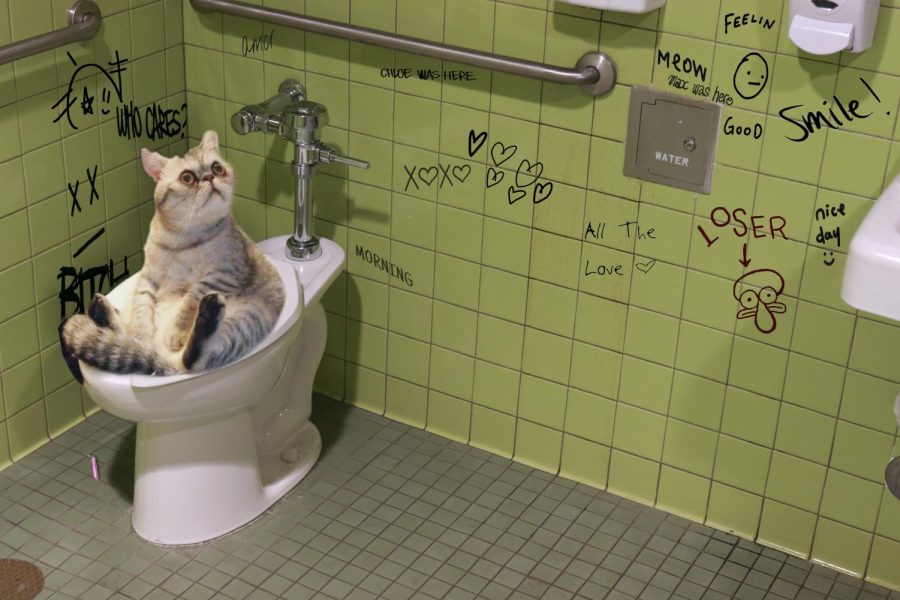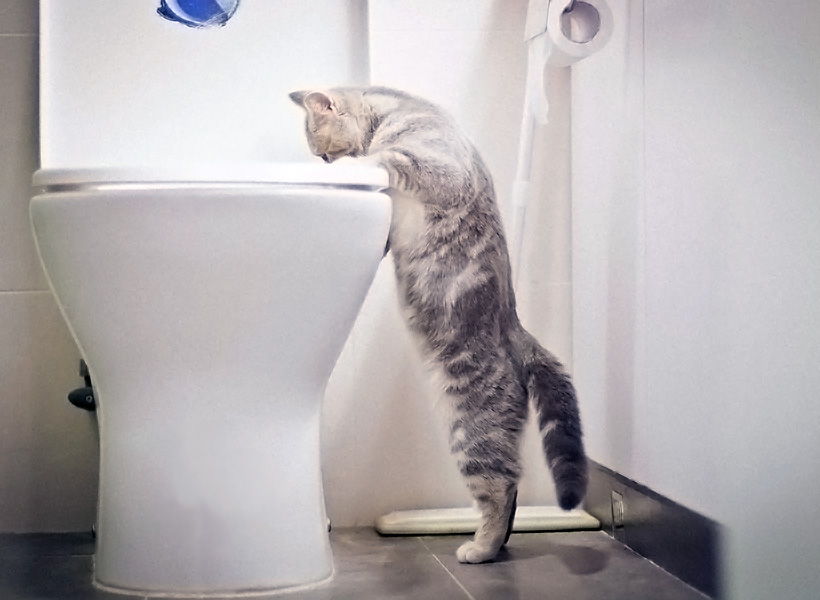Just how do you actually feel in relation to Don’t flush cat feces down the toilet?

Introduction
As pet cat proprietors, it's vital to be mindful of just how we take care of our feline pals' waste. While it might seem convenient to purge feline poop down the toilet, this technique can have harmful effects for both the atmosphere and human health and wellness.
Environmental Impact
Purging feline poop presents hazardous pathogens and parasites right into the water supply, positioning a considerable risk to aquatic ecosystems. These contaminants can negatively impact marine life and compromise water high quality.
Health and wellness Risks
Along with ecological problems, purging cat waste can likewise present health risks to people. Pet cat feces might consist of Toxoplasma gondii, a bloodsucker that can trigger toxoplasmosis-- a possibly serious health problem, particularly for pregnant ladies and individuals with weakened immune systems.
Alternatives to Flushing
Fortunately, there are safer and extra liable means to dispose of pet cat poop. Take into consideration the complying with choices:
1. Scoop and Dispose in Trash
One of the most common approach of dealing with cat poop is to scoop it right into a naturally degradable bag and throw it in the trash. Make sure to make use of a devoted trash scoop and dispose of the waste promptly.
2. Use Biodegradable Litter
Choose naturally degradable cat litter made from materials such as corn or wheat. These litters are eco-friendly and can be safely taken care of in the garbage.
3. Bury in the Yard
If you have a yard, take into consideration hiding pet cat waste in a marked location far from veggie yards and water resources. Make sure to dig deep adequate to stop contamination of groundwater.
4. Mount a Pet Waste Disposal System
Buy an animal garbage disposal system especially made for feline waste. These systems use enzymes to break down the waste, lowering smell and environmental influence.
Final thought
Accountable animal possession expands past giving food and shelter-- it additionally entails appropriate waste administration. By avoiding flushing cat poop down the commode and selecting different disposal methods, we can minimize our ecological footprint and safeguard human wellness.
Why Can’t I Flush Cat Poop?
It Spreads a Parasite
Cats are frequently infected with a parasite called toxoplasma gondii. The parasite causes an infection called toxoplasmosis. It is usually harmless to cats. The parasite only uses cat poop as a host for its eggs. Otherwise, the cat’s immune system usually keeps the infection at low enough levels to maintain its own health. But it does not stop the develop of eggs. These eggs are tiny and surprisingly tough. They may survive for a year before they begin to grow. But that’s the problem.
Our wastewater system is not designed to deal with toxoplasmosis eggs. Instead, most eggs will flush from your toilet into sewers and wastewater management plants. After the sewage is treated for many other harmful things in it, it is typically released into local rivers, lakes, or oceans. Here, the toxoplasmosis eggs can find new hosts, including starfish, crabs, otters, and many other wildlife. For many, this is a significant risk to their health. Toxoplasmosis can also end up infecting water sources that are important for agriculture, which means our deer, pigs, and sheep can get infected too.
Is There Risk to Humans?
There can be a risk to human life from flushing cat poop down the toilet. If you do so, the parasites from your cat’s poop can end up in shellfish, game animals, or livestock. If this meat is then served raw or undercooked, the people who eat it can get sick.
In fact, according to the CDC, 40 million people in the United States are infected with toxoplasma gondii. They get it from exposure to infected seafood, or from some kind of cat poop contamination, like drinking from a stream that is contaminated or touching anything that has come into contact with cat poop. That includes just cleaning a cat litter box.
Most people who get infected with these parasites will not develop any symptoms. However, for pregnant women or for those with compromised immune systems, the parasite can cause severe health problems.
How to Handle Cat Poop
The best way to handle cat poop is actually to clean the box more often. The eggs that the parasite sheds will not become active until one to five days after the cat poops. That means that if you clean daily, you’re much less likely to come into direct contact with infectious eggs.
That said, always dispose of cat poop in the garbage and not down the toilet. Wash your hands before and after you clean the litter box, and bring the bag of poop right outside to your garbage bins.
https://trenchlesssolutionsusa.com/why-cant-i-flush-cat-poop/

Do you appreciate more info about Can You Flush Cat Poop Down The Toilet?? Put a comment down below. We'd be interested to know your thoughts about this piece. We are looking forward to see you back again before long. Please take a moment to distribute this post if you liked it. Thanks so much for taking the time to read it.
Details